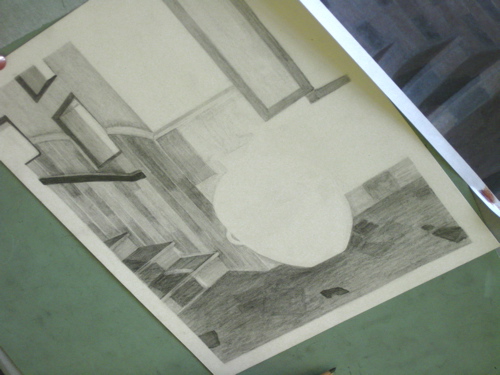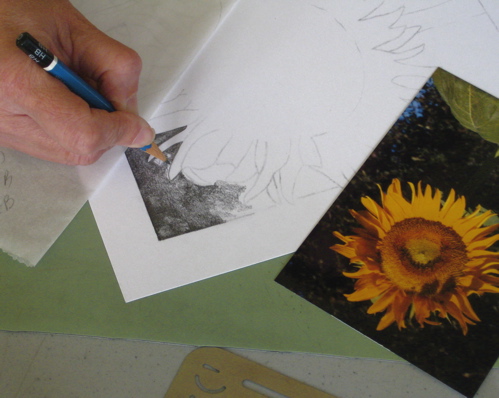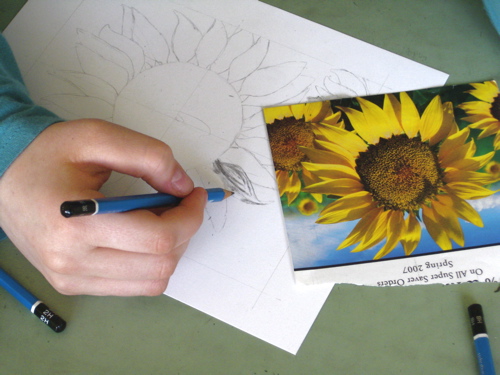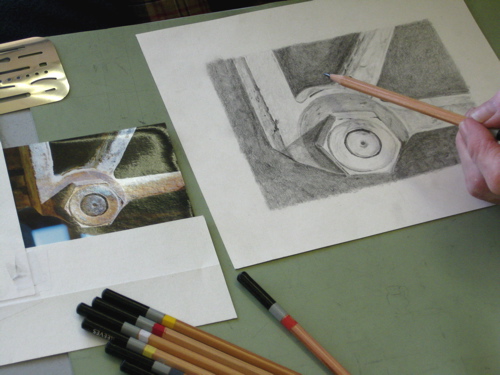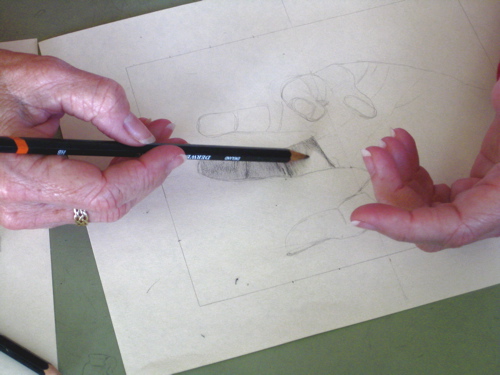This is in graphite and has been spray-fixed so it won’t smear. Next, the giant pot/vase thing will be done in colored pencil. Mary works from the photos she takes on her travels all over the world. Working from one’s own photos is best: no copyright problems and great familiarity with the subject are the advantages.
